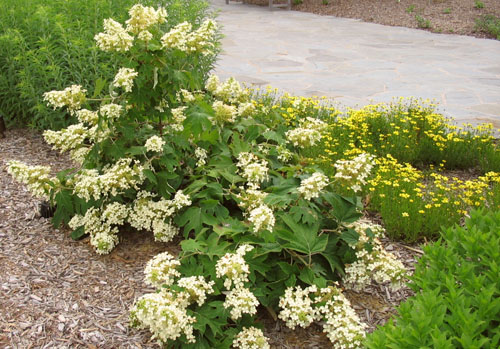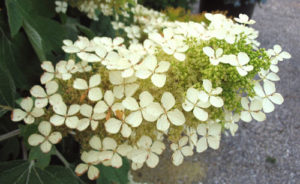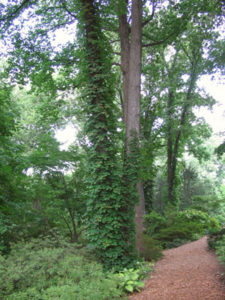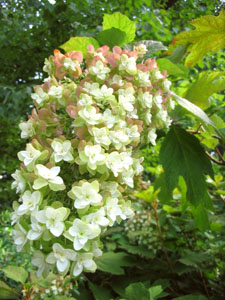Hydrangeas for Everyone

I think it’s a safe bet to say that everyone has grown or at least seen hydrangeas; they permeate the American landscape. What many may not have experienced is the range of hydrangeas out there to try.
There’s a trifecta, if you will, of hydrangeas that are the most commonly encountered: Smooth (‘Annabelle’ is the star child of this group), Panicle and Bigleaf (also known as mopheads, lacecaps, or simply Hortensias; there are a gazillion of these). Each beautiful in its own right, we’ll showcase these plus some others that we feel are among the best to grow.

While ‘Annabelle’ is the famous white snowball-flowered early summer showoff, there are other Smooth Hydrangeas out there. Try White Dome® if you want something more subdued and closer to the wild form (yes, they’re native!) as it’s a lacecap type. Two new varieties, Incrediball and Invincibelle Spirit are making their way into the market.
The former is a large-flowered white; the latter a rare pink. It’s also a pink-ribbon plant that benefits the Breast Cancer Research Foundation®. Bigleaf types have pink, purple, blue or white flowers in either mophead (ball) or lacecap (flat) forms. The recently developed Endless Summer® series gives you a longer flowering due to the ability to grow flower buds throughout the summer – something old varieties don’t do.

A few other newbies do this too, like ‘Penny Mac’ and its little sister, ‘Mini Penny.’ Cultivars in another new series, Cityline™, are very compact and sturdy growers. They are named after European cities, hence Berlin and Vienna. Then there are fantastic oddball varieties with black stems, double lacecaps, or variegated foliage.

Panicle hydrangeas are branching out too. New cultivars like Pinky Winky™ and Quick Fire™ start turning pink from the bottom of the cluster up before the white flowers have even finished opening at the top. They also have spectacular fall color – rich russet-orange and bronze-red – where others just turn yellow.
Limelight® is popular for its pastel lime-green young flowers, and ‘Little Lamb’ is a more compact and smaller-flowered version of PeeGee so it doesn’t tend to arch under the weight of the flowers (which, admittedly, can look nice). White Diamonds™ has strong stems with large white flowers than open earlier than most.

Oakleaf types have, you guessed it, oak-shaped leaves that are covered in downy silver fuzz in spring on soft, cinnamon-orange stems. Fall leaves are burgundy, red and caramel-orange, and I have seen a few of them remain on plants sheltered from strong winds well into early spring. Bark peels on older plants, an excellent feature in winter. Flowers are ivory-white, with some fragrance, and open in early summer.

Climbing hydrangeas are the best flowering vine for shady spots. They cling to bark, brick, or wood; although they are slower than most vines, I have seen them reach 50’ or more on tall tree trunks.
There are three members of the hydrangea family that grow well here, and they’re all a mouthful: Climbing Hydrangea (Hydrangea anomala petiolaris), Japanese Hydrangeavine (Schizophragma hydrangeoides) and Woodvamp (Decumaria barbara), the latter being native in this area.
White flowers show up between late spring and early summer, and leaves turn yellow in fall (only Woodvamp can be evergreen). Climbing Hydrangea also has peeling bark like the Oakleaf types. Since they also take part shade, I like throwing Clematis in to scramble up through them and extend the flowering season.

All hydrangeas prefer to be moist in well-drained soil that is at least slightly acidic. During drought, you should soak them every now and then. Afternoon shade and mulched roots will keep them cooler and less likely to wilt in than full sun.
For the Bigleaf hydrangeas that have flowers that can change color, stronger acidity will give you purples and blues. Less acid soil that has some extra potassium will give you pink.
Smooth and Panicle hydrangeas flower on new growth and can be cut back in late winter with no worries; Oakleaf, Bigleaf, and Climbing types flower on old growth from the prior year, and if you prune before they flower you risk removing all your flowers for that year. Generally, though, most hydrangeas don’t even need regular pruning. Just sit back and enjoy the show!
By Miri Talabac, Woody Plant Buyer/Manager

Do you have May Apples? I had plenty growing with my Lily of the Valley plants, but this year I counted only three May Apple plants.
If you do have them, please let me know how much for what size and which store will have them.
Thank you.
Pauline Johnson
I have five Exbury Azalea shrubs that I believe need pruning. Three of them are over six feet tall. When should the pruning take place? The rain, wind and heat this year meant that they were in bloom for only a couple of weeks. I cannot control the elements, but is there a way to extend the bloom life?
Thank you.
Pauline,
Unfortunately we are sold out of the season on Mayapples. Since Lily-of-the-Valley is an aggressive groundcover, I wonder if a few of the mayapples succumbed to the root competition.
Exbury Azaleas can be pruned after flowering is finished (usually now). I know of no way to extend flowering, especially given the vagaries of the weather. Six feet is a common height for full-grown Exburys and so I would expect pruned plants to eventually reach that size again. Azaleas don’t generally want to be pruned too heavily, but up to a third of the top growth could be removed in one year without causing too much stress.
Miri
I didn’t have a chance to remove old flowers from last summer’s hydrangeas. Now,of course, the bushes are covered with unsightly brown leftover flowers from last summer. Q: could I possibly carefully cut out the old flowers now, when it’s almost March? If not, how/where will new flowers show themselves this summer?
Thanks so much for any help–Barbara